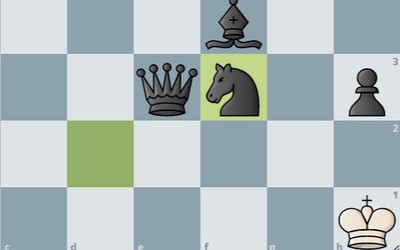
Why The Sad Queen Trade Was the Right Move
This post is a little strategic analysis to try and justify the queen trade that Stockfish says Black should have made.Analysis
My game is here. Black to play, and the move is 14.

Black has a material lead of a minor piece minus White's extra pawn. But White has some compensation -- their pieces are out, and Black's aren't. That's an activity imbalance.
By trading queens, Black can maintain their material advantage while negating White's activity lead, since trading queens neutralizes activity on the board. After the trade, Black can easily finish development, completing the smoothing out of the imbalance.
Alternatively, Black can counter that development advantage with Stockfish's second best choice, Nd7, developing a minor piece with the strong possibility of queen trading anyway with Qxf6 Nxf6.
You can see in the below screenshot that NONE of Stockfish's top 5 moves say that Black should move the queen to avoid the trade. In fact, all of those 'best lines' for Black involve a queen trade except for the second one from the top -- but that's the Nd7 line I already mentioned, and like I said, it too likely involves a queen trade.

Trading queens wouldn't just remove one of White's advantages -- it would also disrupt White's pawn majority by doubling White’s pawns -- removing two of White's advantages in one move! This raises the question, should Black still trade queens in a similar position that wouldn't double the pawns? How large a factor is the disrupted pawn majority in making the decision to trade?
To try and investigate, I went to the board editor and changed the position so that the pawns were no longer doubled by the exchange. I moved a pawn to b3, put the queen on b2, removed the light square bishop, and put a dark square bishop on a3. Unfortunately, it attacked Black's rook there, forcing Black to trade anyway, so I also added one pawn on each side so that the one on e7 would block the bishop. Then I ran another analysis:

In the edited position, Black's trade will remove the activity imbalance. But, it will do so without disrupting White's pawn majority. It perhaps even corrects White's dark square bishop, which ends up on b2 where it's safer and attacks g7. Despite those apparent drawbacks, trading is still Stockfish's top choice for Black.
Strategic Takeaways for Queen Trading
I have noted below some elements that are present in my original game and on the edited board. The idea is that I can hopefully use them in future games to justify a queen trade if all are present (or to avoid it if my position is reversed).
- Both players castled kingside with safe kings.
- Kingside pawns are equal; one player has a +1 queenside pawn majority.
- The other player has an extra minor piece (+2 lead) but lags behind in development of at least two minor pieces.
I propose that if these three factors are present on the board, then it's likely a good strategy for the player with the material lead to trade queens.
Are my guidelines too specific? Too general? Entirely specious? What do you think? Please comment below.


